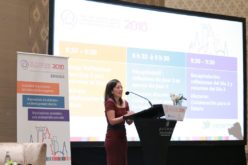Education and the Battle against Informality
This post has been written by Luis Linares and Julio Prado, researchers at ASIES in Guatemala. They have recently launched a paper – Measurement of Progress of Decent Work and its Support to Achieving MDGs – part of theSouthern Voice Initiative.
The informal economy
Significantly increasing the opportunities for decent work is essential to ensure that ‘no one is left behind’ in the Post-2015 Agenda. However, this is a highly complex challenge, and many countries – including Guatemala – are considerably behind on the goal of poverty reduction envisioned by the Millennium Development Goals (MDGs), which in turn negatively influences the achievement of the other goals.
A common feature of these countries is that there is a limited supply of decent jobs, particularly wage labour in the modern sector of the economy. At the same time, the number of workers employed in different segments of the informal economy continues to increase. In the informal economy, low-productivity activities predominate and, consequently, wages are lower, there is no social security protection and workers cannot exercise the rights guaranteed under the labour law.
The self-employed as well as employees and owners of microenterprises have limited opportunities to access credit and training, and stay in a situation of growing informality on taxation issues, where the possibility of obtaining a decent job becomes scarce.
The Case of Guatemala
The National Survey of Employment and Earnings (2013) presents a fairly complete picture of the labour market in Guatemala. Highlights include the following features of the employed population (over 15 years old):
– 70% work in the informal economy
– In rural areas (where 54% of the population resides), this percentage rises to 79%
– Women have a 35% participation
– 38% of the population identifies themselves as indigenous
– 75% have no high school education (28% have no education)
– By type of occupation, 32% work in elementary occupations
– Agriculture and trade each absorb 30% of the occupied
– 42% of employed women work in commercial activities
It is noteworthy that, according to data from the System of Decent Work Indicators for Guatemala (Sistema de Indicadores de Trabajo Decente para Guatemala) developed by ASIES, 39% of the unemployed completed secondary education, while, in the total working population 18% completed secondary education. This could be due to various reasons:
– Secondary education does not meet the demand of the labour market
— The number of jobs generated by the labour market is insufficient to absorb the increased supply of labour
— The labour market does not offer positions compatible with the salary expectations of graduates from high school
An important fact to keep in mind is that, according to data from various sources, around 160,000 young people seek to join the labor market annually. But, by 2012, the annual growth of formal employment, measured by the increase in membership of social security, barely exceeded 25,000 jobs.
Looking forward to the next development agenda
Therefore, one of the challenges for the education system in Guatemala is to expand coverage of secondary education and improve its quality. The objective must be for graduates to have skills and abilities in areas such as English and information technologies. As pointed out by Corinne Woods, Director of the United Nations Millennium Campaign: “There are many problems facing the world of education today, but one that must be addressed urgently is its failure to equip young people with the skills they need to move into the workplace.”
The characteristics of the labour market in countries like Guatemala have to be taken into consideration: the high level of informality is a very precarious situation in terms of its implications on income levels, given that the average monthly income is less than the minimum wage salary.
Reversing this situation will require a set of government policies, including a medium and long term education policy, with a guaranteed continuity, along with the allocation of necessary resources to effectively improve the educational level. In 2001, public spending on education in Guatemala was equivalent to 1.6% of GDP, while Costa Rica spent 7.1% and Honduras (which, along with Nicaragua, is among the less developed of Central America countries) allocated 6%.
To create more decent jobs and to reduce informality, we must identify our real needs in relation to education and technical training.Among the aspects to be improved are the curricula, increasing the hours of study (to reach a minimum of 180 days of school a year) and improving the educational infrastructure. One option that has been recommended by ASIES is adopting a dual training system, which has been very successful in Germany, which combines theoretical training in school and real practice at the workplace.
Woods also mentions in her paper that 25% of the current global job opportunities in the field of Information Technology are being lost due to lack of qualified staff and, according to Microsoft, experts predict that this value will grow to 77% in the next decade. These statistics should lead us to reflect and act quickly to meet this gap and build a more inclusive and prosperous society, as expressed by Olav Kjorven: “There is a common understanding that ambitious targets on providing access to food, education, jobs, health, energy, water and sanitation will be included in the next generation of the development goals. There is strong agreement that we need targets to reverse environmental degradation and protect the ecosystems that provide the resources and services we depend on. There is commitment to building more just societies for women and girls, and to reverse the trend of rising income inequality. You need ambitious targets to achieve that as well. There is agreement that the next agenda needs to be for all countries, North and South. We’re all in this together.”
1,403 total views, 1 views today










